Migrating data from MySQL to MariaDB
This guide will show you how to easily migrate data from MySQL to MariaDB through a few simple steps with ESF Database Migration Toolkit, simplifying the complex migration processes and saving you valuable time.
MySQL vs. MariaDB:
- MySQL is an open-source relational database management system (RDBMS) that provides a powerful and scalable platform for managing and storing data. Developed by Oracle Corporation, MySQL is widely used in web applications and is known for its reliability, flexibility, and ease of use. It supports various storage engines, including InnoDB for transactional processing and MyISAM for read-intensive applications, offering developers the flexibility to choose the engine that best suits their needs. With features like ACID compliance, replication support, and a thriving community of developers, MySQL is a popular choice for businesses of all sizes looking to build robust and efficient database-driven applications.
- MariaDB is a powerful open-source relational database management system (RDBMS) that originated as a fork of MySQL. It was developed by the original creators of MySQL in response to concerns over its acquisition by Oracle Corporation. MariaDB retains compatibility with MySQL while offering additional features, improved performance, and enhanced security. It is widely used in various applications ranging from small-scale web databases to large-scale enterprise systems, thanks to its flexibility, scalability, and active community support.
Prerequisite:
Software Required:
DMToolkit_x64.zip
(63.5 MiB)64-bit Windows application for ESF Database Migration Toolkit 12.2.07 (2025-07-01).
(md5: 0750355677f7108916a6c1f2bc0d4d87)DMToolkit_win32.zip
(58.9 MiB)32-bit Windows application for ESF Database Migration Toolkit 12.2.07 (2025-07-01).
(md5: a9ba6351d787ff958b4ff2d9ca888576)System Supported:
- Windows 7 or higher.
- MySQL 3.23 or higher.
- MariaDB 5.1 or higher.
Step by Step Wizard:
-
In "Choose a Data Source" dialog, choose "MySQL";
- Enter the server name (default: localhost) and port (default: 3306).
- Enter the username (default: "root") and its password.
- Click the "Refresh" button to list all available databases, then select one of them.
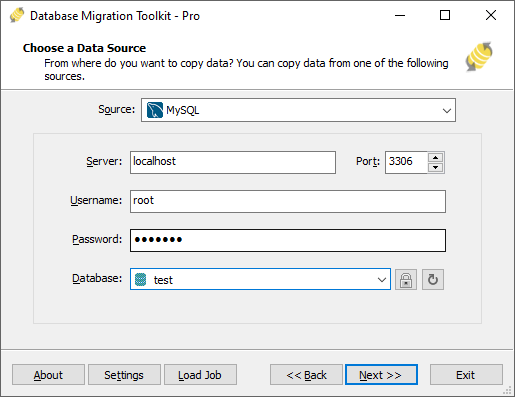
-
In "Choose a Destination" dialog, choose "MariaDB";
- Enter the server name (default: localhost), port (default: 3306), username, and password.
- Optional: Choose a MariaDB Storage Engine.
- Optional: Select a character set, e.g., UTF-8.
- Select an existing database or input a new database name (click the 'Refresh' button to list all databases). If the target database does not exist, this tool will automatically create it during the migration process.
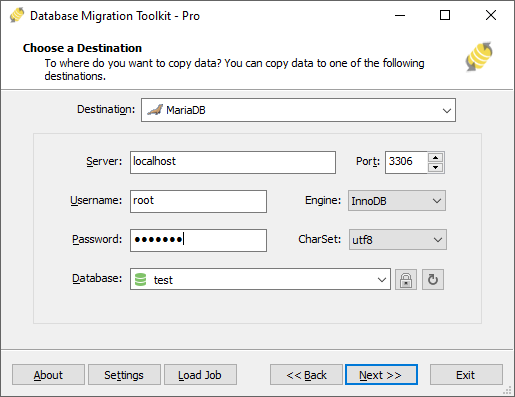
-
In "Select source Tables(s) & View(s)" dialog;
- Select the tables or views you want to migrate.
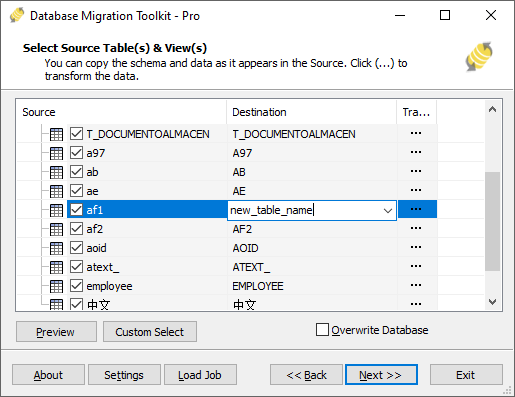
- You can access the table options or adjust the table structure by clicking the "..." button.
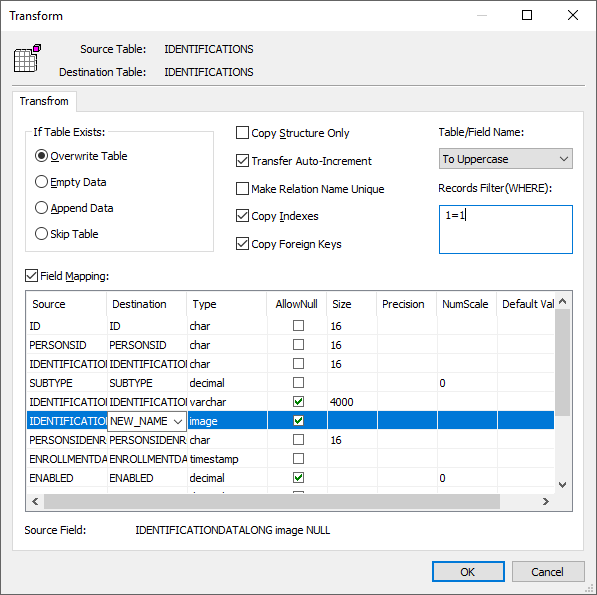
- In the "Field Mapping" option, you can customize the destination table's fields, such as field name, data type, default value, comment, and more. You also have the option to choose the data transfer method, including Overwrite Table, Empty Data, Append Data, or Skip Table, or even filter the data before transferring it.
- Select the tables or views you want to migrate.
-
In "Execution" Dialog;
- You can start the migration process by clicking "Submit". The toolkit will efficiently and seamlessly migrate your data from MySQL to MariaDB without the need for manual intervention.
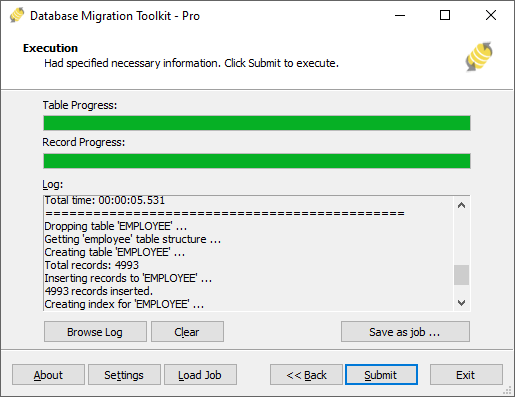
- To keep track of the migration process, you can access the full migration log by clicking "Browse Log". This will provide you with a comprehensive view of the entire migration, including any potential issues and their resolutions.
- To save time in the future, you can save the migration settings as a job file by clicking "Save as job". This allows you to quickly reload the migration job at a later time or run the migration job using the command-prompt by typing "dmtc.exe --help". The command-prompt provides you with a full list of parameters to customize the migration process to your specific needs.
- You can start the migration process by clicking "Submit". The toolkit will efficiently and seamlessly migrate your data from MySQL to MariaDB without the need for manual intervention.
-
Finished!
Upon completion, the toolkit will generate a comprehensive migration report, providing you with all the information you need to verify the accuracy and completeness of the migration process. So, you can sit back and relax while the program carries out the task efficiently. Should you have any inquiries or recommendations, don't hesitate to reach out to us. We're always happy to help.